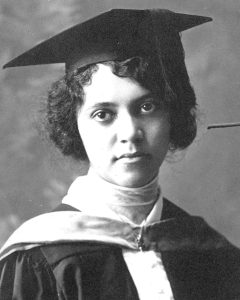Chapter 10 Liquids and Solids
Chapter 10 Liquids and Solids

Leprosy has been a devastating disease throughout much of human history. Aside from the symptoms and complications of the illness, its social stigma led sufferers to be cast out of communities and isolated in colonies; in some regions this practice lasted well into the 20th century. At that time, the best potential treatment for leprosy was oil from the chaulmoogra tree, but the oil was extremely thick, causing blisters and making usage painful and ineffective. Health care professionals seeking a better application contacted Alice Ball (Figure 10.1), a young chemist at the University of Hawaii, who had focused her master’s thesis on a similar plant. Ball initiated a sequence of procedures (repeated acidification and purification) to change the characteristics of the oil and isolate the active substances (esters, discussed later in this text). Ball died at age 24 due to chlorine gas exposure in a classroom incident that could have been prevented by modern ventilation, an issue she had advocated to fix previously. After her death, Dr. Harry T. Hollmann published Ball’s breakthrough research, but Dr. Arthur Dean published various scientific articles on the “Dean Method,” which refined Ball’s work. However, Dean never cited the original research and claimed it entirely as his own. Eventually, the stolen work was rightfully restored as the “Ball Method,” leaving a lasting impact as the standard treatment for leprosy for decades.
In the liquid and solid states, atomic and molecular interactions are of considerable strength and play an important role in determining a number of physical properties of the substance. For example, the thickness, or viscosity, of the chaulmoogra oil was due to its intermolecular forces. In this chapter, the nature of these interactions and their effects on various physical properties of liquid and solid phases will be examined.
Media Attributions
- Alice Augusta Ball © Unknown Author is licensed under a Public Domain license
